The room glows vibrant pink, the floor flooded with hundreds of tiny pink marbles. As I approach the two chairs and a plush baroque sofa of matching fuchsia, what at first appears to be a scene of domestic bliss reveals itself to be anything but as gnarled metal nails and sharp spikes protrude from the cushions. An eerie cutout of a woman recoils into the armrest.
This mixed-media installation captures generations of female anguish in Yun Suknam’s native South Korea, reflecting her observations and lived experience of the subjugated and serviceable housewife. The marbles are the mother’s sweat and tears, while the chairs are a symbol of the passivity of woman in the home.
It’s a poignant introduction to Enclave: An Autobiography (飛地:一部自傳的誕生), the latest exhibition at the Taipei Fine Arts Museum. Each exhibit explores the many facets of the female experience, an audiovisual journey into women’s inner lives, darkest thoughts and wildest dreams. Running until Dec. 15, it showcases 28 female artists in a 112-piece collection spanning seven decades and comprised of paintings, sketches, videos and a commissioned biographical novel of their lives.
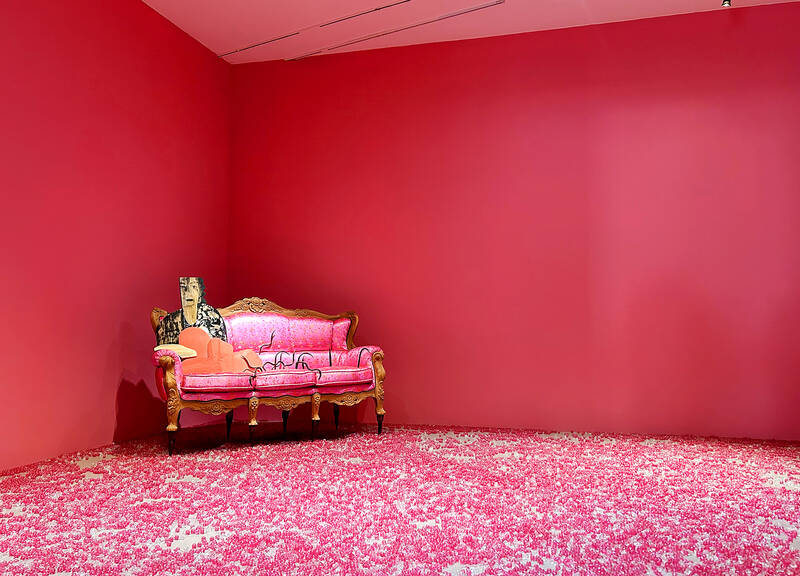
Photo: Hollie Younger
From a 1969 artistic interpretation of the book Little Women to the modern-day Taiwanese millennial questioning the construct of marriage, the works employ a myriad of themes, including labor division, gender equality and self-identity.
“The Enclave reveals how female artists have carved out space for creativity amid multiple identities and responsibilities,” says curator Kat Siao (蕭琳蓁).
The exhibit unfolds in three sections. Window — Quotidian Realities explores the boundary between the home and the outside world, best exemplified by Yun’s complex and unsettling installation.
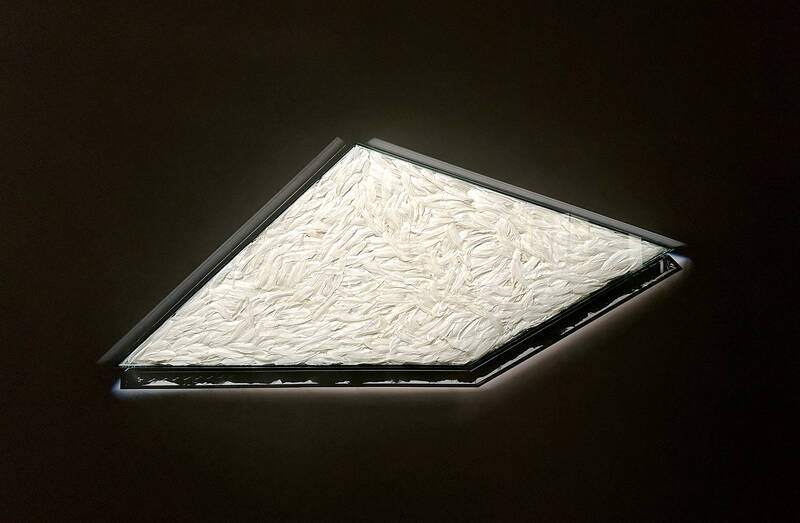
Photo: Hollie Younger
Time Passes — Awareness in Changes narrates women’s self-reflections throughout life’s joys and vicissitudes. For example, Chen Hui-chiao’s (陳慧嶠) Between Stops (似停非停, 1997) features hundreds of white feathers that are tightly compressed into a glass case to symbolize her feelings of confinement and limitation.
The Lighthouse — Symbol and Pursuit turns outward, exploring politics, the environment, social structures and collective trauma. As the most dynamic and interactive segment, it invites viewers to immerse themselves in visual storytelling. Crashing waves are projected onto a wall in one part of the room, while in another visitors sit on bean bags with headphones beneath a staircase, watching a short film cast up onto the slanted wall.
This section features Huang Hai-hsin’s (黃海欣) Marriage Crisis (婚姻危機, 2012), which depicts a bride and groom, their wedding cake ablaze while guests choke on the fumes at the couple’s feet. The oil painting explores marriage as both a societal expectation and personal choice, reflecting the dilemmas faced by young Taiwanese women.
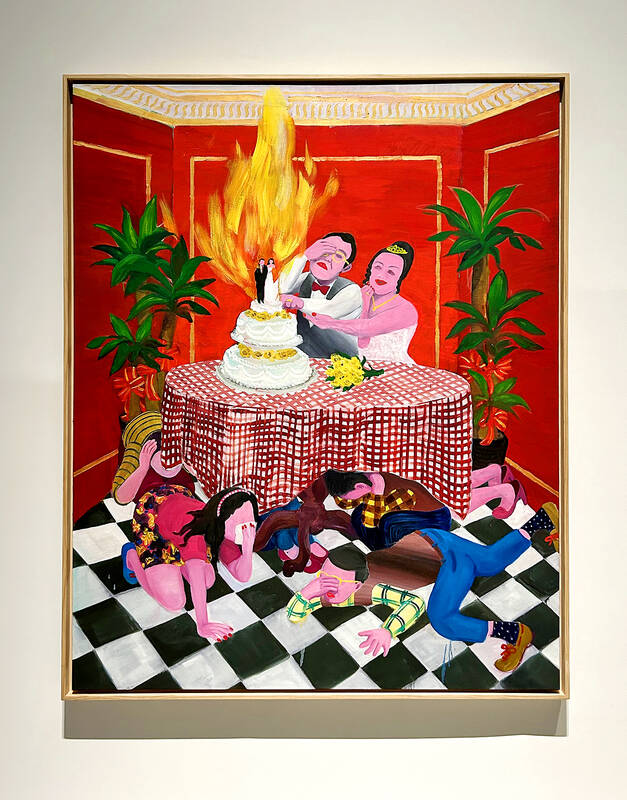
Photo: Hollie Younger
Huang says seeing her work brings up “the intense frustration and self-doubt I felt over a decade ago. Yet, amidst the turmoil, I also see a strength and resilience that I didn’t fully appreciate at the time.”
‘THE TREASURE BOX’
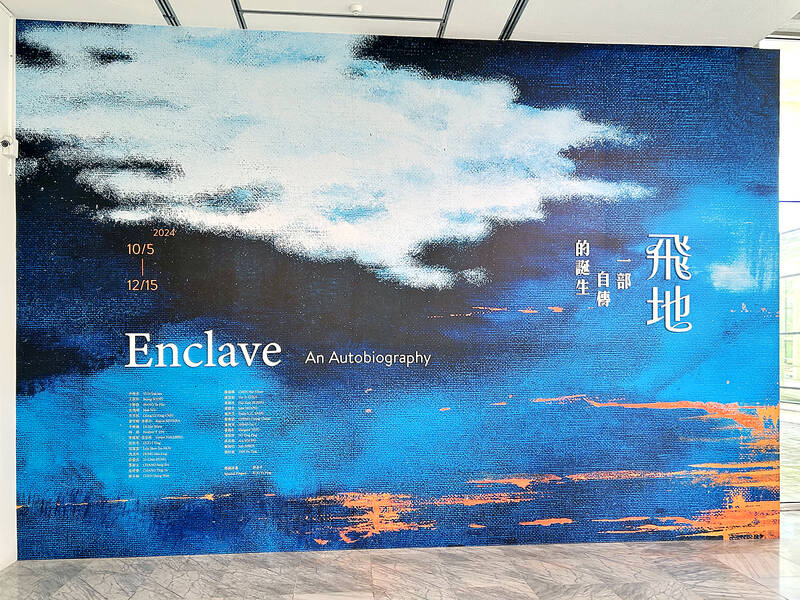
Photo: Hollie Younger
Siao commissioned artist Kuo Yu-ping (郭俞平) to write a short novel, The Treasure Box (珍藏盒), the only new work contained within the exhibition. Visitors can read the novella on seating chairs and cushions within an otherwise unused staircase suspended above the main exhibition floor, which it has dubbed The Study Project.
“While preparing the exhibition, we were deeply moved by the artists’ life experiences. We aimed not only to showcase their work but to convey this sense of connection,” she says.
Mirroring the exhibition experience, Kuo says that, in writing the novel, she had to travel back in time, to Taiwan under Japanese colonial rule and the post-war period, from Paris in the wake of World War II to rural Switzerland.
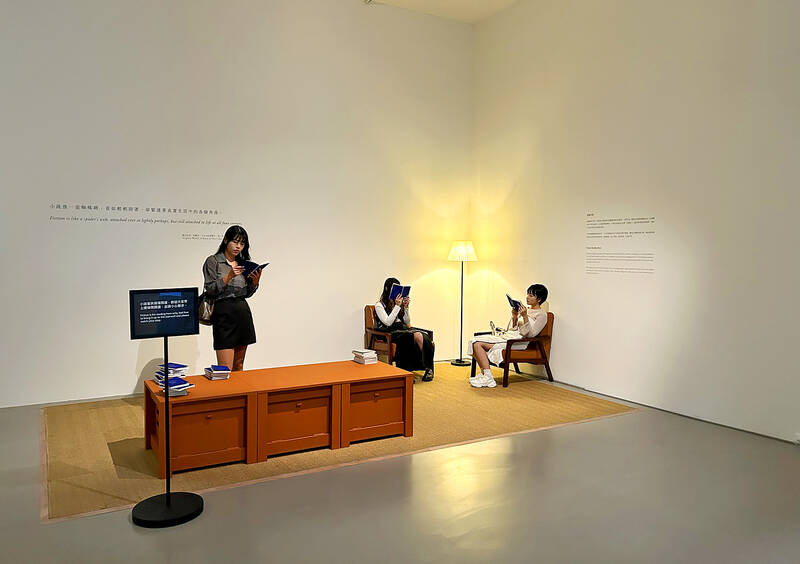
Photo: Hollie Younger
The novella drills to the core of this exhibition’s message: “how, within the limitations of their particular eras, did these women pursued dreams of self-fulfillment,” Kuo says.
Reading the program — and, for Chinese readers, the novel — brings more clarity and understanding to the otherwise unexplained or, in my opinion, under-explained works. Many are more abstract or surrealist, with their inspiration or stories easily passed by. Then again, perhaps that is the point, as it is perfectly emblematic of a woman’s inner world — complex, misunderstood and too often overlooked.
“It’s a testament to the enduring nature of human expression and the timeless quality of great art,” Huang says.
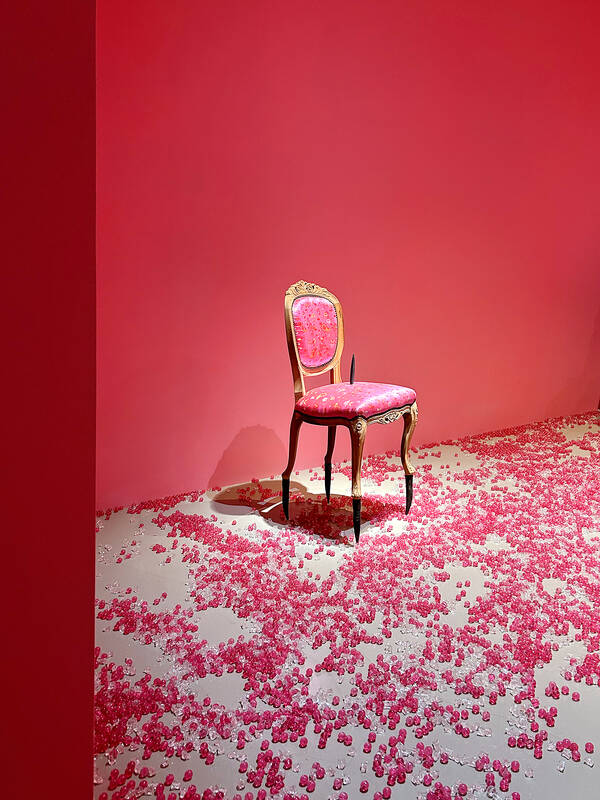
Photo: Hollie Younger

The Taipei Times last week reported that the rising share of seniors in the population is reshaping the nation’s housing markets. According to data from the Ministry of the Interior, about 850,000 residences were occupied by elderly people in the first quarter, including 655,000 that housed only one resident. H&B Realty chief researcher Jessica Hsu (徐佳馨), quoted in the article, said that there is rising demand for elderly-friendly housing, including units with elevators, barrier-free layouts and proximity to healthcare services. Hsu and others cited in the article highlighted the changing family residential dynamics, as children no longer live with parents,

Oct 20 to Oct 26 After a day of fighting, the Japanese Army’s Second Division was resting when a curious delegation of two Scotsmen and 19 Taiwanese approached their camp. It was Oct. 20, 1895, and the troops had reached Taiye Village (太爺庄) in today’s Hunei District (湖內), Kaohsiung, just 10km away from their final target of Tainan. Led by Presbyterian missionaries Thomas Barclay and Duncan Ferguson, the group informed the Japanese that resistance leader Liu Yung-fu (劉永福) had fled to China the previous night, leaving his Black Flag Army fighters behind and the city in chaos. On behalf of the

I was 10 when I read an article in the local paper about the Air Guitar World Championships, which take place every year in my home town of Oulu, Finland. My parents had helped out at the very first contest back in 1996 — my mum gave out fliers, my dad sorted the music. Since then, national championships have been held all across the world, with the winners assembling in Oulu every summer. At the time, I asked my parents if I could compete. At first they were hesitant; the event was in a bar, and there would be a lot

The election of Cheng Li-wun (鄭麗文) as chair of the Chinese Nationalist Party (KMT) marked a triumphant return of pride in the “Chinese” in the party name. Cheng wants Taiwanese to be proud to call themselves Chinese again. The unambiguous winner was a return to the KMT ideology that formed in the early 2000s under then chairman Lien Chan (連戰) and president Ma Ying-jeou (馬英九) put into practice as far as he could, until ultimately thwarted by hundreds of thousands of protestors thronging the streets in what became known as the Sunflower movement in 2014. Cheng is an unambiguous Chinese ethnonationalist,